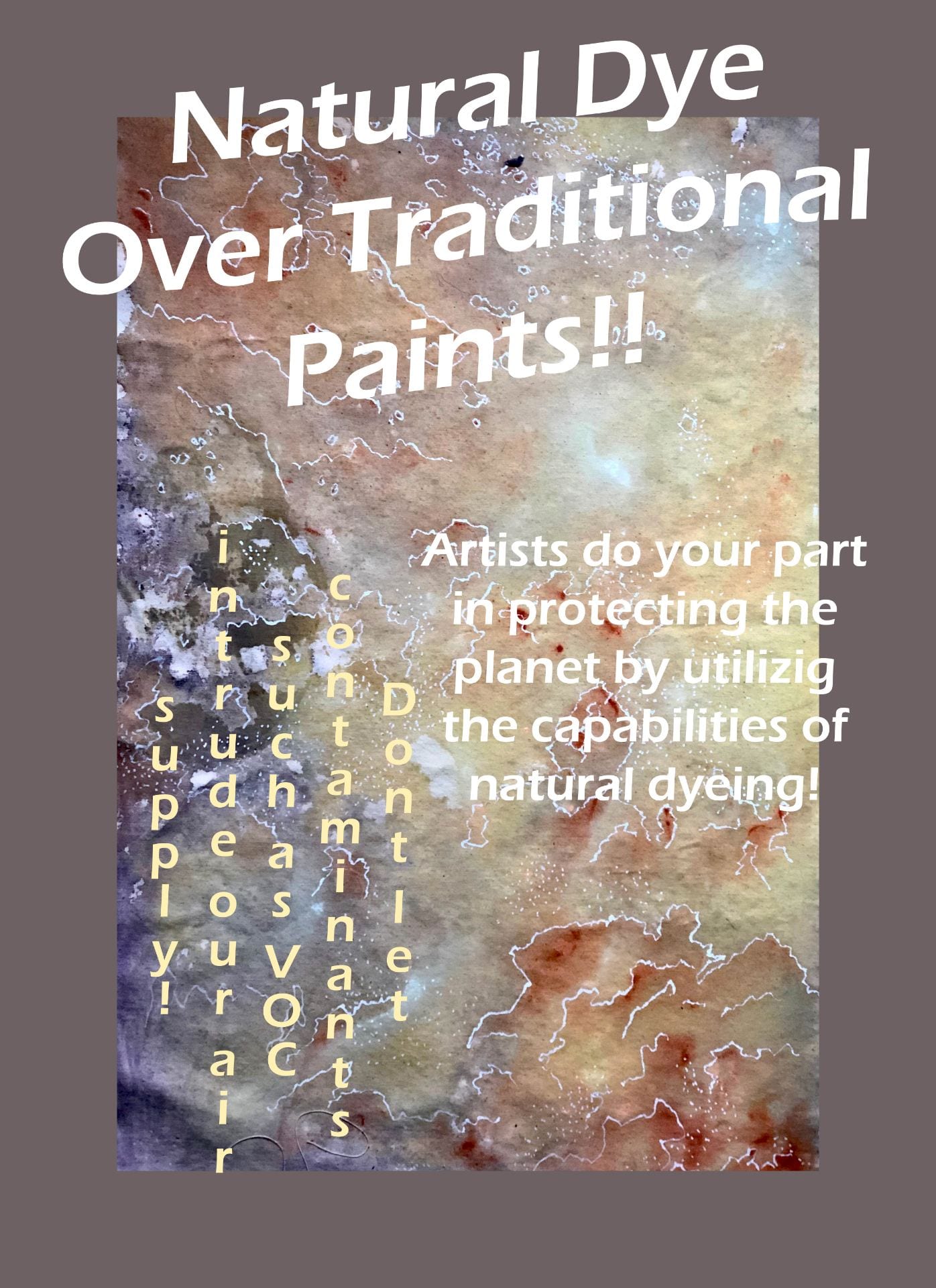Ahmrii Johnson
16 November, 2018
Natural Dye PH Project
As artists and designers we may not commonly be aware of how the process and materials utilized to create artwork affects not only our health but the health of our surrounding environment. After much consideration and investigation I have become more aware of how the materials such as acrylic, watercolor, and oil paints may affect our air and water supplies. Especially in a large university that accumulates countless amounts of disposed art materials, we should be aware of how our innovative creations may be affecting our environment.
The main environmental impacts associated with paint come from the manufacturer of the components, rather than manufacturing of the product itself. By far the greatest environmental impact is derived from the manufacture of Titanium Dioxide Emissions during manufacture including (depending on process) CO2, N2O, SO2, NOx CH4 and VOCs 9. A number of waste streams, including spent acid and metal sulfates, emanate from the manufacturing process, each of which carries an environmental impact. A number of EU directives seek to reduce and eliminate the pollution caused. Ozone produced as part of human activities is a pollutant and a constituent of smog. Ozone is formed when nitrogen oxides, carbon monoxide and VOCs react in the atmosphere in the presence of sunlight. Although lead has been banned for use in paint for decades, other chemicals commonly found in paint have also been linked with significant health and environmental issues. Most paints and stains contain volatile organic compounds (VOCs) and other chemicals that create toxic fumes that can linger indoors for long periods of time. Some VOCs contribute to ozone depletion while others have known health risks. One of the chemicals linked to illness is propane sulfone, which is widely used in paints and is a powerful known carcinogen. The respiratory system and skin are the most significant routes for poisoning from chemicals in paints and stains. The good news is that low-VOC or no-VOC paints and stains are becoming more widely available to the consumer.
In vinyl and acrylic paints they will also include plastic compounds. Some will include formaldehyde, arsenic, thinners, and foamers. Paint typically consists of pigment, resin, solvent and additives: pigment-to provide colour, hiding and control gloss. Pigments are usually divided into two groups. One called ‘Prime Pigments’ includes pigments such as Titanium Dioxide (white), Chrome Green Oxide, Yellow and Red Iron Oxides, etc. The other group of pigments is called ‘Extender Pigments’ and includes Calcite (Calcium Carbonate), Talc (Magnesium Silicate), Mica, Barytes (Barium Sulphate), etc. Resin – the binder to hold the pigment particles together and provide adhesion to the surface painted. Waterborne paints most often use acrylic emulsion polymers as binders. These come in a wide variety of types and combinations. Common acrylic polymer types are based on monomers such as methyl methacrylate and butyl methacrylate. Traditionally, lower cost paints have been formulated on PVA (Poly Vinyl Acetate) binders. Solvent based resins come in a very wide range of types. The most common solvent based resins are termed ‘alkyd resins’ that are normally used in enamel paints. Urethane alkyds often used in clear varnishes. Protective coating resins include types such as Epoxy, Urethane, Polysiloxane and Moisture Cured Urethane. Solvent – to act as a carrier for the pigments and resin – the solvent may be organic (such as Mineral Turps) or water. Additives – to enhance certain properties such as ease of brushing, mould resistance, scuff resistance, drying and sag resistance.Prolonged or high exposure to paint and paint fumes can cause headaches, trigger allergies and asthmatic reactions, irritate skin, eyes and airways, and put increased stress on vital organs such
as the heart. The World Health Organization (WHO) has reported a 20%-40% increased risk of certain types of cancer (in particular lung cancer) for those who come into regular contact with, or work with paint while Danish researchers point to the added possibility of neurological damage.
The idea of natural dyeing becoming a premature substitute for large loads of acrylic paint is a possibility that must be considered and even further developed for common day use by artists and designers that care about environmental sustainability. As a prototype I have developed an original painting, made by the natural dyes that I made from the five different water sources that I collected, and an advertisement calling for awareness of how common materials can contribute to the piling pollution of the earth.
Water Resources: tap water, filtered water, chelsea pier, red hook waterfront, battery park
Process Images:
Painting Made of Natural Dye (24′ x 36′):
Advertisement:





